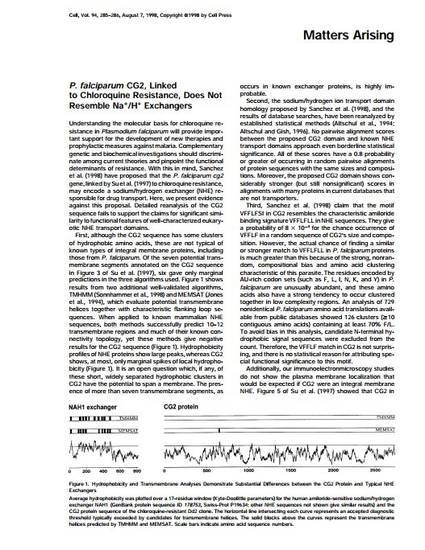
Article
P. falciparum CG2, linked to chloroquine resistance, does not resemble Na+/H+ exchangers
Cell
(1998)
Abstract
Understanding the molecular basis for chloroquine resistance in Plasmodium falciparum will provide important support for the development of new therapies and prophylactic measures against malaria. Complementary genetic and biochemical investigations should discriminate among current theories and pinpoint the functional determinants of resistance. With this in mind Sanchez et al. 1998 have proposed that the P. falciparum cg2 gene, linked by Su et al. 1997 to chloroquine resistance, may encode a sodium/hydrogen exchanger (NHE) responsible for drug transport. Here, we present evidence against this proposal. Detailed reanalysis of the CG2 sequence fails to support the claims for significant similarity to functional features of well-characterized eukaryotic NHE transport domains.
Disciplines
Publication Date
August 7, 1998
Citation Information
Thomas E. Wellems, John C. Wootton, Hisashi Fujioka, Xin-zhuan Su, et al.. "P. falciparum CG2, linked to chloroquine resistance, does not resemble Na+/H+ exchangers" Cell Vol. 94 Iss. 3 (1998) p. 285 - 286 ISSN: 0092-8674 Available at: http://works.bepress.com/roland_cooper/6/
